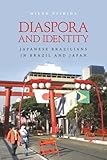Diaspora and Identity : Japanese Brazilians in Brazil and Japan / Mieko Nishida.
Material type: TextPublisher: Honolulu : University of Hawaii Press, [2017]Copyright date: ©2017Description: 1 online resource (312 p.) : 4 b&w illustrations, 2 mapsContent type:
TextPublisher: Honolulu : University of Hawaii Press, [2017]Copyright date: ©2017Description: 1 online resource (312 p.) : 4 b&w illustrations, 2 mapsContent type: - 9780824867935
- 9780824874278
- 981/.004956 23
- F2659.J3 N58 2018
- online - DeGruyter
- Issued also in print.
| Item type | Current library | Call number | URL | Status | Notes | Barcode | |
|---|---|---|---|---|---|---|---|
 eBook
eBook
|
Biblioteca "Angelicum" Pont. Univ. S.Tommaso d'Aquino Nuvola online | online - DeGruyter (Browse shelf(Opens below)) | Online access | Not for loan (Accesso limitato) | Accesso per gli utenti autorizzati / Access for authorized users | (dgr)9780824874278 |
Browsing Biblioteca "Angelicum" Pont. Univ. S.Tommaso d'Aquino shelves, Shelving location: Nuvola online Close shelf browser (Hides shelf browser)

|

|

|

|

|

|

|
||
| online - DeGruyter Destiny : The Secret Operations of the Yodogō Exiles / | online - DeGruyter Vamping the Stage : Female Voices of Asian Modernities / | online - DeGruyter Behaving Badly in Early and Medieval China / | online - DeGruyter Diaspora and Identity : Japanese Brazilians in Brazil and Japan / | online - DeGruyter Unbending Cane : Pablo Manlapit, a Filipino Labor Leader in Hawaii / | online - DeGruyter Made in Hawai‘i / | online - DeGruyter The Arts of Kingship : Hawaiian Art and National Culture of the Kalakaua Era / |
Frontmatter -- Contents -- Acknowledgments -- Note on Personal Names and Currency -- Abbreviations -- Introduction -- Chapter One. Immigration and Diaspora -- Chapter Two. Prewar Child Immigrants and Their Japanese Identity -- Chapter Three. Niseis and Their Brazilian Identity -- Chapter Four. Postwar Immigrants and Their New Japanese Identity -- Chapter Five. Niseis, Sanseis, and Their Class-Gender Identity -- Chapter Six. Sanseis, Yonseis, and Their Racial Identity -- Chapter Seven. Japanese Brazilians and Their Brazilian Identity in Japan -- Conclusion -- Notes -- Glossary -- Bibliography -- Index
restricted access online access with authorization star
http://purl.org/coar/access_right/c_16ec
São Paulo, Brazil, holds the largest number of Japanese descendants outside Japan, and they have been there for six generations. Japanese immigration to Brazil started in 1908 to replace European immigrants to work in São Paulo's expanding coffee industry. It peaked in the late 1920s and early 1930s as anti-Japanese sentiment grew in Brazil. Approximately 189,000 Japanese entered Brazil by 1942 in mandatory family units. After the war, prewar immigrants and their descendants became quickly concentrated in São Paulo City. Immigration from Japan resumed in 1952, and by 1993 some 54,000 immigrants arrived in Brazil. By 1980, the majority of Japanese Brazilians had joined the urban middle class and many had been mixed racially. In the mid-1980s, Japanese Brazilians' "return" labor migrations to Japan began on a large scale. More than 310,000 Brazilian citizens were residing in Japan in June 2008, when the centenary of Japanese immigration was widely celebrated in Brazil. The story does not end there. The global recession that started in 2008 soon forced unemployed Brazilians in Japan and their Japanese-born children to return to Brazil.Based on her research in Brazil and Japan, Mieko Nishida challenges the essentialized categories of "the Japanese" in Brazil and "Brazilians" in Japan, with special emphasis on gender. Nishida deftly argues that Japanese Brazilian identity has never been a static, fixed set of traits that can be counted and inventoried. Rather it is about being and becoming, a process of identity in motion responding to the push-and-pull between being positioned and positioning in a historically changing world. She examines Japanese immigrants and their descendants' historically shifting sense of identity, which comes from their experiences of historical changes in socioeconomic and political structure in both Brazil and Japan. Each chapter illustrates how their identity is perpetually in formation, across generation, across gender, across class, across race, and in the movement of people between nations.Diaspora and Identity makes an important contribution to the understanding of the historical development of ethnic, racial, and national identities; as well as construction of the Japanese diaspora in Brazil and its response to time, place, and circumstances.
Issued also in print.
Mode of access: Internet via World Wide Web.
In English.
Description based on online resource; title from PDF title page (publisher's Web site, viewed 02. Mrz 2022)


